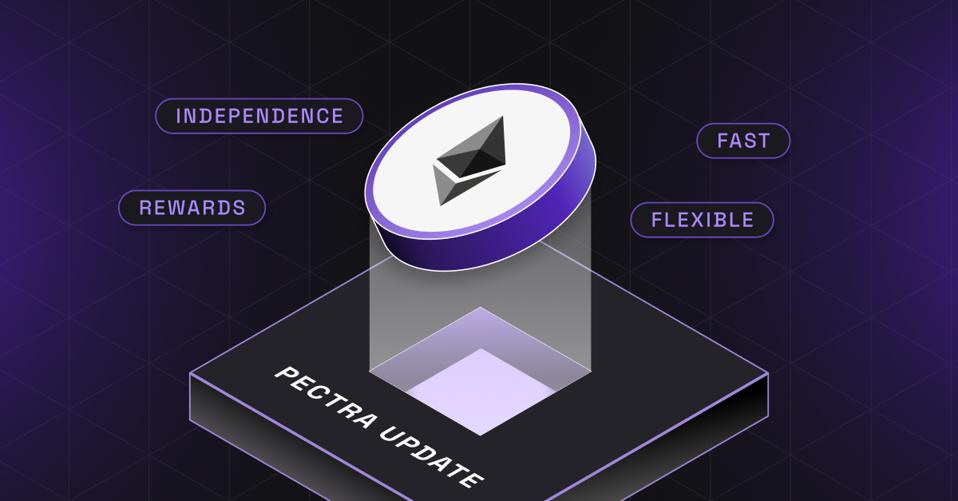Ethereum's evolution continues through planned, systematic upgrades aimed at enhancing scalability, security, and user experience. Following the successful
Dencun upgrade
in 2024, which introduced proto-danksharding via blobs and significantly reduced Layer-2 transaction costs, the ecosystem turns its attention to a new series of ambitious improvements slated for 2025. These upgrades represent core components of Ethereum's broader roadmap, often summarized by terms like The Surge (focused on scaling) and The Scourge (focused on mitigating risks like MEV). This article explores five major upgrades—centering on the imminent
Fusaka hard fork
—that are poised to substantially optimize the network across critical domains like data availability, validator efficiency, cross-chain interoperability, and account abstraction. While some changes are infrastructural and mostly felt by node operators and developers, others promise to deliver tangible benefits for end-users, such as cheaper transactions and more intuitive wallet interactions. The consistent theme across all upgrades is a strategic push towards a more scalable, efficient, and resilient Ethereum.

Fusaka Upgrade: Scaling Data and Efficiency
Scheduled for a
December 3, 2025, mainnet activation, the Fusaka upgrade is the next major hard fork on Ethereum’s roadmap and a cornerstone of "The Surge" phase. Its primary objective is to significantly boost network scalability and efficiency, particularly for Layer-2 rollups, by implementing profound changes to how data is handled and verified.
Peer Data Availability Sampling (PeerDAS - EIP-7594)
A centerpiece of Fusaka, PeerDAS revolutionizes the way validators ensure data is available. Instead of requiring every validator to download entire large data 'blobs'—a process demanding high bandwidth—validators can now cryptographically sample small segments of data from their peers. This drastically reduces the hardware requirements for validators while maintaining strong security guarantees. For users, this translates to
cheaper L2 transaction fees as the cost of publishing data to the mainnet drops, enabling rollups to pass on the savings.
Verkle Trees
Fusaka introduces Verkle Trees, a powerful data structure that replaces Merkle Patricia Tries. They are essential for Ethereum's statelessness roadmap. Verkle Trees allow for much smaller proof sizes, meaning validators can verify the state of the chain without storing the entire massive dataset locally. This optimization reduces storage burdens on node operators and paves the way for lighter client types.
Increased Gas Limit (EIP-7935)
The upgrade proposes a substantial increase to the block gas limit, initiating a path from the current 30 million units toward approximately 150 million. A higher gas limit allows more transactions to be included in each block, thereby increasing the network's overall throughput capacity and reducing congestion.
Blob Capacity Expansion via BPO Forks
Although the initial blob parameters remain unchanged at launch, Fusaka sets the stage for immediate follow-up upgrades called Blob Parameter Only (BPO) forks. These are small, coordinated hard forks solely intended to increase blob capacity.
The planned schedule is:
This phased approach, based on performance analysis from Devnet-5, allows developers to safely and incrementally scale data capacity while monitoring network health.
Pectra Upgrade: Enhancing User and Validator Experience
While Fusaka handles backend scalability, many user-centric features debuted in the
Pectra upgrade, which went live in May 2025. Several key EIPs from Pectra continue to be highly relevant in 2025 due to their significant impact on wallet design and staking mechanics.
EIP-3074: Revolutionizing Wallet UX
EIP-3074 introduces new opcodes (
AUTH
and
AUTHCALL
) that allow Externally Owned Accounts (EOAs)—standard user wallets—to delegate authority to a smart contract, called an
invoker. This enables several groundbreaking features:
-
Sponsored Transactions: Applications can pay the gas fees for their users, removing a major barrier to entry.
-
Transaction Batching: Multiple actions (e.g., swapping, lending, providing liquidity) can be executed in a single transaction, saving time and fees.
-
Improved Security Models: It enables functionalities akin to multi-signature setups or social recovery without requiring users to migrate to a new smart contract wallet. It's seen as a major step towards better user experience before the widespread adoption of ERC-4337 (account abstraction).
EIP-7251: Boosting Staking Efficiency
Known as "max effective balance," this proposal allows a single validator node to stake more than the previous 32 ETH limit—potentially up to 2,048 ETH. This benefits large stakers (e.g., institutions, staking pools) by simplifying their operations and reducing overhead. Instead of managing hundreds of validators, they can consolidate their stake into fewer nodes, improving network efficiency and making staking more accessible for major entities.
EIP-7002: Securing Staker Withdrawals
This upgrade mitigates a key risk for users who delegate their staking to operators. Previously, a malicious or compromised node operator could refuse to sign an exit message, effectively holding the staked ETH hostage. EIP-7002 allows a staker to initiate a withdrawal using their
withdrawal credentialsinstead of the validator key held by the operator. This enhances the security and control for delegators, making staking safer.
The Surge Roadmap: Beyond Fusaka to 100,000 TPS
Fusaka is a critical milestone within Ethereum's broader "Surge" roadmap, whose ultimate goal is to achieve
100,000+ transactions per second (TPS) without compromising decentralization. This is not achieved by scaling the mainnet (L1) alone but by fostering a robust ecosystem of Layer-2 rollups that handle execution off-chain and use L1 for secure settlement and data availability.
The long-term vision extends beyond Fusaka's PeerDAS to full
Data Availability Sampling (DAS). In this future state, validators will be able to verify the availability of massive datasets by randomly sampling tiny portions, making it feasible for the network to securely support exponentially more data blobs for L2s. This will be complemented by danksharding, which will distribute the task of holding blob data across a committee of validators, creating a scalable and secure data layer for the entire ecosystem.
Cross-Chain Interoperability: ERC-7683 and ERC-7281
As the multi-chain ecosystem matures, solving the problem of fragmented liquidity and non-fungible bridged assets becomes paramount. Two key standards address this in 2025.
ERC-7683: The Cross-Chain Intent Standard
Proposed by Uniswap and Across Protocol, ERC-7683 establishes a universal standard for cross-chain intents. It defines a shared structure for a "cross-chain order," like a universal ticket that any user can create and any solver (or filler) can fulfill. This standardization aims to:
-
Unify Liquidity: Create shared filler networks that aggregate liquidity across chains, leading to better prices and faster execution for users.
-
Improve UX: Offer a seamless and intuitive experience for cross-chain swaps and transfers, abstracting away the underlying complexity of bridges.
-
Drive Innovation: Provide a common foundation upon which developers can build interoperable applications.
ERC-7281 (xERC-20): Sovereign Cross-Chain Tokens
ERC-7281, or xERC-20, solves the problem of
non-fungible bridged assets. Currently, when a token like USDC is bridged by different protocols, each issues its own non-interchangeable version (e.g., USDC.e, USDC.b). This fragments liquidity and harms user experience.
xERC-20 gives token issuers (like Circle) sovereignty over how their asset is bridged. The issuer can:
-
Authorize Bridges: Whitelist specific bridge protocols to mint and burn the canonical version of their token on foreign chains.
-
Set Dynamic Limits: Impose minting/burning rate limits on each bridge based on its perceived security (e.g., a higher limit for a well-audited bridge, a lower one for a newer one). This allows issuers to manage risk exposure precisely.
This ensures users always receive the same canonical token on any chain, regardless of the bridge they use, restoring fungibility and simplifying the user experience.
Glamsterdam: Glimpsing the Next Major Upgrade
Even as Fusaka is deployed, Ethereum developers are already planning the next major upgrade, tentatively named
Glamsterdam and anticipated in 2026. While its final scope is still being defined, discussions on the ACDC #165 call indicated it will likely focus on two headliner features:
-
Enshrined Proposer-Builder Separation (ePBS): A deeply complex but critical upgrade designed to mitigate the risks of Maximum Extractable Value (MEV) by formally separating the roles of block
building (selecting and ordering transactions) and
proposing (signing the block) at the protocol level. This aims to create a more fair and decentralized block production market.
-
Full EVM Object Format (EOF): A comprehensive repackaging of the Ethereum Virtual Machine to make it more efficient, secure, and easier to upgrade in the future. EOF was initially considered for Fusaka but was postponed to ensure a more focused and stable testing process.
Conclusion
Ethereum's evolution in 2025 is a story of targeted, simultaneous progress on multiple fronts. The
Fusaka upgradeaddresses foundational scaling through PeerDAS and Verkle Trees. The lingering effects of the
Pectra upgradereshape user interaction with wallets via EIP-3074 and refine the staking experience with EIP-7251 and EIP-7002. Looking further out, the
Glamsterdam upgrade begins to take shape, targeting core protocol challenges like MEV.
Underpinning it all is a clear strategic direction: Ethereum L1 is evolving into a robust
security and data settlement layer, while its scalability story is being written through a combination of L2 rollups and core upgrades that make publishing data to L1 cheaper and more efficient. This "modular" approach, complemented by critical interoperability standards like
ERC-7281 and
ERC-7683, aims to create a seamless and unified user experience across a vast, scalable ecosystem. For developers, node operators, and users, 2025 is a year of significant transition, moving Ethereum decisively closer to its goal of being a scalable, secure, and decentralized global settlement layer.
References:
CoinCatch Team
Disclaimer:
Digital asset prices carry high market risk and price volatility. You should carefully consider your investment experience, financial situation, investment objectives, and risk tolerance. CoinCatch is not responsible for any losses that may occur. This article should not be considered financial advice.


